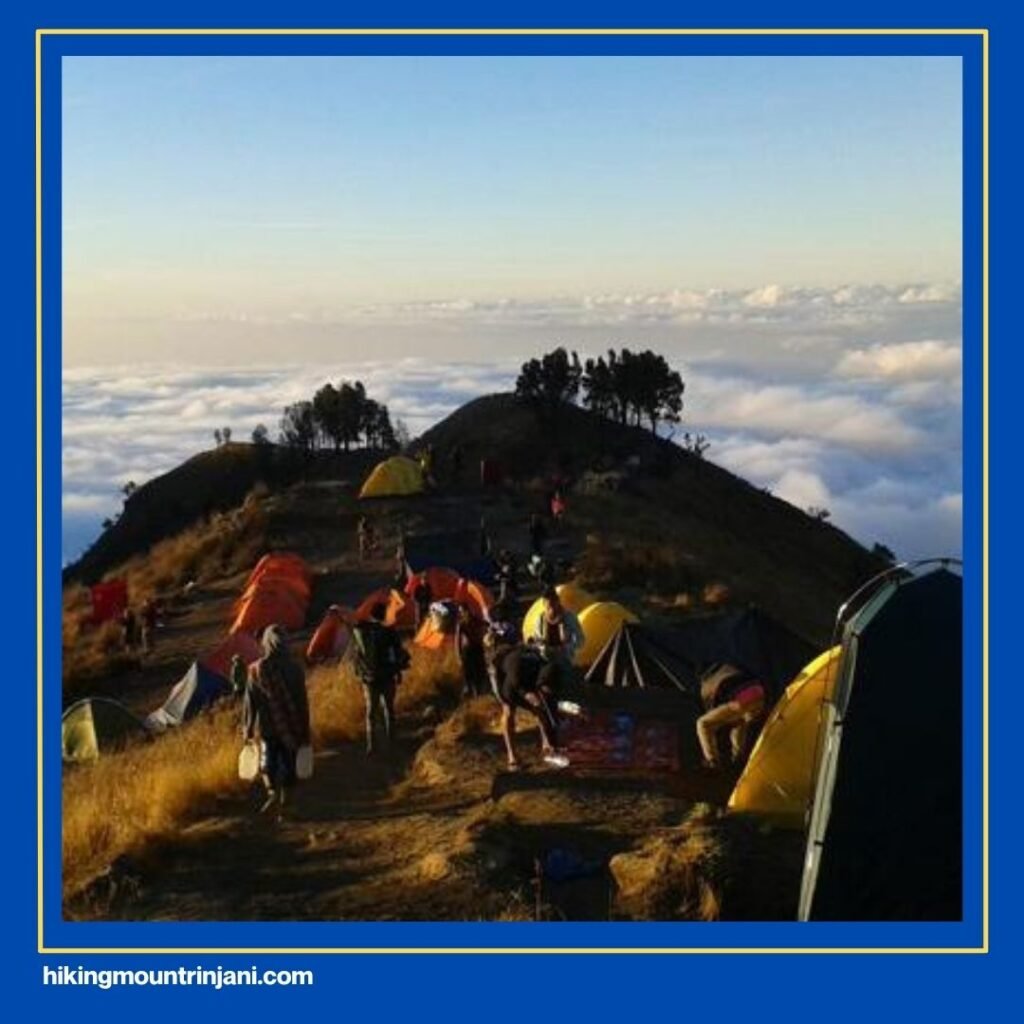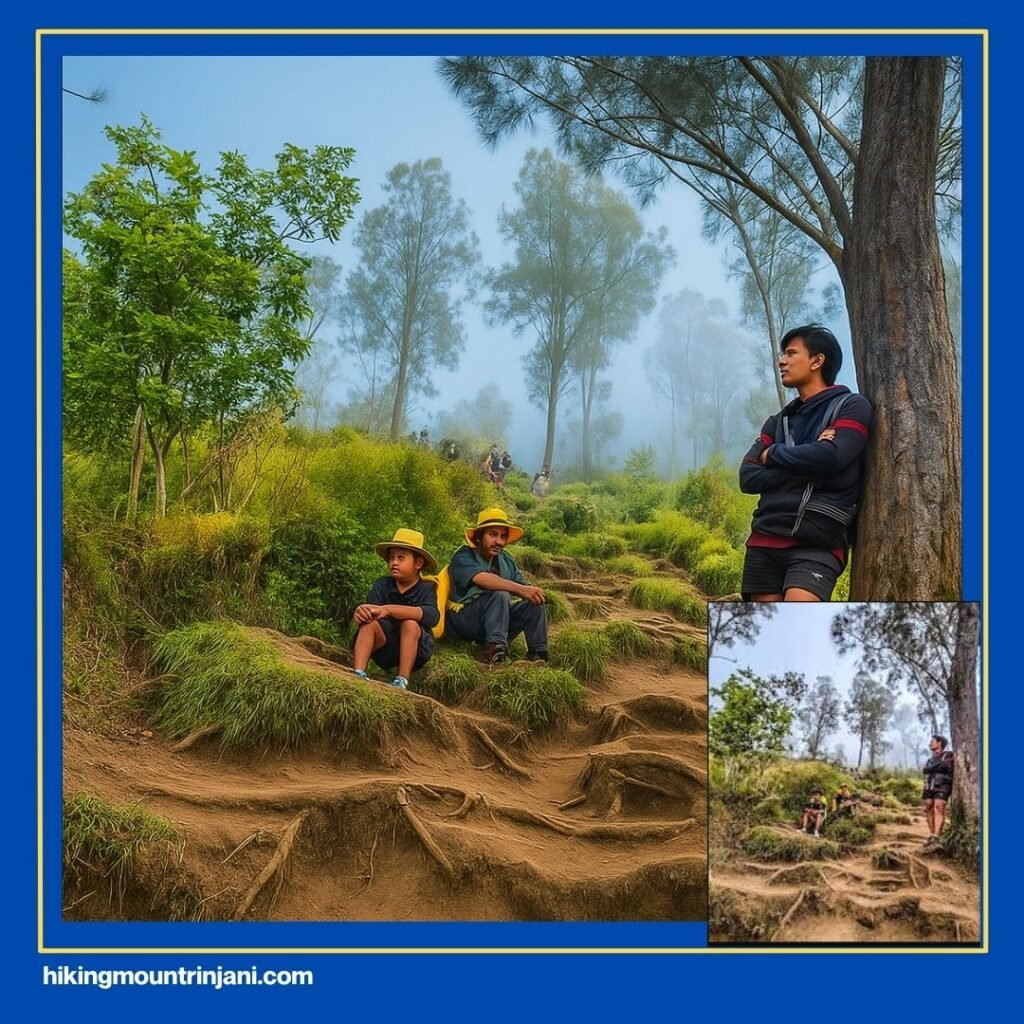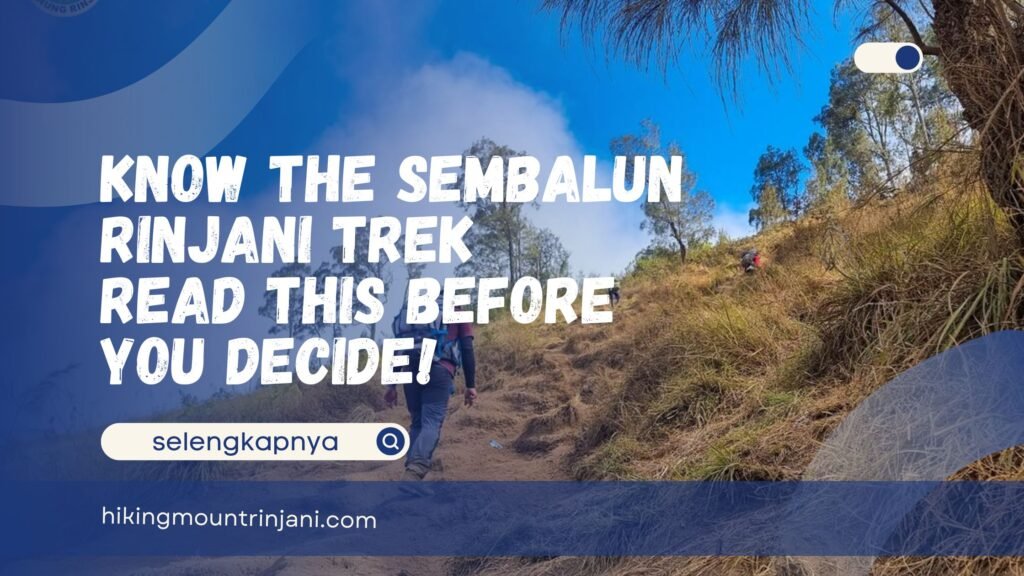Sembalun Rinjani Trek – When people talk about climbing Mount Rinjani, the second-highest volcano in Indonesia, one name often stands out — Sembalun Rinjani Trek. Located on the eastern side of Lombok, the Sembalun route is one of the two main gateways to the Rinjani summit, the other being Senaru. It’s famous for its open savanna landscapes, spectacular sunrise views, and wide slopes that seem to stretch endlessly beneath the clouds.
However, if this will be your first time visiting and climbing this mountain, you should know whether this popular route truly suits your starting point or not. That way, you won’t end up regretting your choice later.
To help you decide the best starting route for your Rinjani adventure, this article will walk you through the Sembalun Rinjani Trek in detail — from its terrain and vegetation to what makes the journey both breathtaking and challenging. Let’s get started!
What Is the Sembalun Trail?

The Sembalun Trail is one of the most popular routes to reach the summit of Mount Rinjani, standing tall at 3,726 meters above sea level. The trail starts from Sembalun Village, located at around 1,150 meters. Compared to the Senaru route, which begins with dense tropical forests, Sembalun offers vast open grasslands and panoramic views almost from the very first step.
Most trekkers choose this route because it’s less steep at the beginning and provides a gradual elevation gain. Ideal for warming up before the tougher climbs ahead. However, don’t let the gentle start fool you. The trek grows progressively demanding, testing both stamina and mental endurance as you approach the crater rim.
The full Sembalun route usually takes two days to reach the summit and one to two more days to descend, depending on your chosen itinerary. Most agencies offer packages that combine Sembalun as the starting point and Torean as the finishing trail, allowing a more scenic and less steep descent.
.
Read also: Senaru or Sembalun Rinjani? 5 Must-Know Facts Before U Decide
Know the Sembalun Rinjani Trek Before You Decide
Before booking your trip, it’s important to understand what awaits you along the Sembalun Rinjani Trek. While it’s known for its incredible beauty, this route also presents unique challenges that might surprise first-time trekkers. Let’s take a closer look at what makes Sembalun special — and demanding.
1. Vegetation Along the Sembalun Trek

The Sembalun side is famous for its savanna-like landscape. The trail begins with open grasslands stretching across gentle hills, allowing trekkers to enjoy unobstructed views of the Rinjani peak from afar. The lack of dense trees means that you’ll have a clear panorama almost throughout the trek — a photographer’s dream.
However, this beauty comes with a catch: exposure to the sun. Because there is very little shade, the temperature can rise significantly during the day. Trekkers often start their journey early in the morning, around 6 AM, to avoid the scorching midday heat. Sunscreen, hats, and plenty of water are essential for this route.
2. Trail Surface Condition

Unlike the forested Senaru route, the Sembalun Trail has loose, dusty soil and sandy paths, especially as you gain elevation. During the dry season (May to October), the ground can become slippery with loose gravel, making each step more energy-consuming.
The trek’s moderate incline at the start makes it suitable for beginners, but as you approach the crater rim, the terrain becomes steeper and rockier. Good trekking shoes with solid grip are non-negotiable. Trekking poles are also highly recommended, especially during descent, when the slippery sand can make balance difficult.
3. The “Regret Hill” on the Sembalun Trek

If you’ve heard other trekkers talk about “Regret Hill”, you might already know: it’s the point where the Sembalun Rinjani Trek earns its reputation.
The highlight – and challenge – comes at Regret Hill, a steep 60-degree climb that truly tests your stamina before reaching the Sembalun Crater Rim at 2,639 meters. Many trekkers jokingly call it “the place where you start to regret your decision” — hence the name.
Unlike the forest-covered trails, this section is exposed and direct, meaning you’ll feel every step under the sun. The path zigzags through dry grass and loose soil, demanding both physical strength and mental focus. But once you reach the crater rim, all exhaustion fades. The view is simply unforgettable — a massive turquoise crater lake below, with the Rinjani summit towering in the distance.
If you’ve ever hiked the Letter “E” section on the way to Rinjani’s summit, you can think of Regret Hill as its warm-up version. It’s shorter but equally intense, offering an early taste of what’s to come.
Is the Sembalun Rinjani Trek a Good Starting Point for Your Climb?
So, is the Sembalun Rinjani Trek a good route to start your Rinjani adventure? The answer depends on your goals and fitness level.
- If you’re looking for beautiful scenery, open landscapes, and a rewarding challenge, Sembalun is perfect. The gradual ascent at the beginning allows your body to adjust before facing tougher climbs. The panoramic views of Rinjani’s slopes, villages, and crater lake make every step worthwhile.
- However, if you’re sensitive to sun exposure or prefer forest shade and cooler temperatures, you might find this route exhausting during midday. The lack of tree cover and loose soil can be tough on your legs, especially when carrying a heavy backpack.
For many trekkers, though, the combination of challenge and beauty makes Sembalun an unforgettable choice. It’s the most scenic way to start your climb, and one of the best introductions to Rinjani’s grandeur.
.
Read also: Best Mount Rinjani Tours for the Rainy Season (Oct – December)
Best Packages to Hike Mount Rinjani via Sembalun

If you’re planning to take this route, two package options are highly recommended for a balanced experience:
1. 3D2N: Start from Sembalun and Finish in Torean
This is the most popular itinerary. You’ll start from Sembalun, reach the crater rim on the first day, summit Rinjani at sunrise on the second, and descend via the Torean route on the last day.
Why this route? Because it allows you to enjoy the best of both worlds — the panoramic savanna of Sembalun on the way up, and the lush rainforest and waterfalls of Torean on the way down. It’s physically demanding but ideal for trekkers who want a full Rinjani experience without repeating the same path twice.
2. 4D3N: Start from Sembalun and Finish in Torean
If you prefer a slower pace and more rest time, the 4-day package is the way to go. You’ll have an extra night to relax and recover before descending, which is perfect for those who value comfort and steady progress.
Both of these packages are provided by Hiking Mount Rinjani as a professional trekking agency. The company has been guiding trekkers since 2015, long before they established their online presence. Despite being relatively new to the internet, they’ve already earned the trust of many international climbers through word-of-mouth recommendations.
Some trekkers have reported issues with other agencies: from unclear camping arrangements to poor-quality tents and disappointing meals. We understand that climbing Rinjani is not a cheap experience, and your time and money deserve the best service possible.
That’s why we recommend contacting Hiking Mount Rinjani directly for a transparent, well-organized experience. You can explore their profile at hikingmountrinjani.com or reach out via WhatsApp at +62 878-7884-1703 to discuss your trekking plans in detail.
Whether you’re a first-timer or a seasoned adventurer, choosing the right team can make all the difference between a tiring journey and a memorable, once-in-a-lifetime climb.
The final…
The Sembalun Rinjani Trek is more than just a route. It’s a journey through Lombok’s wild beauty, from golden savannas to volcanic craters. It challenges you physically and mentally but rewards you with unmatched scenery and a deep sense of accomplishment.
If you’re ready to take on the challenge, prepare well, choose a trusted trekking agency, and let Sembalun show you why Mount Rinjani remains one of Southeast Asia’s most iconic climbs.
.

